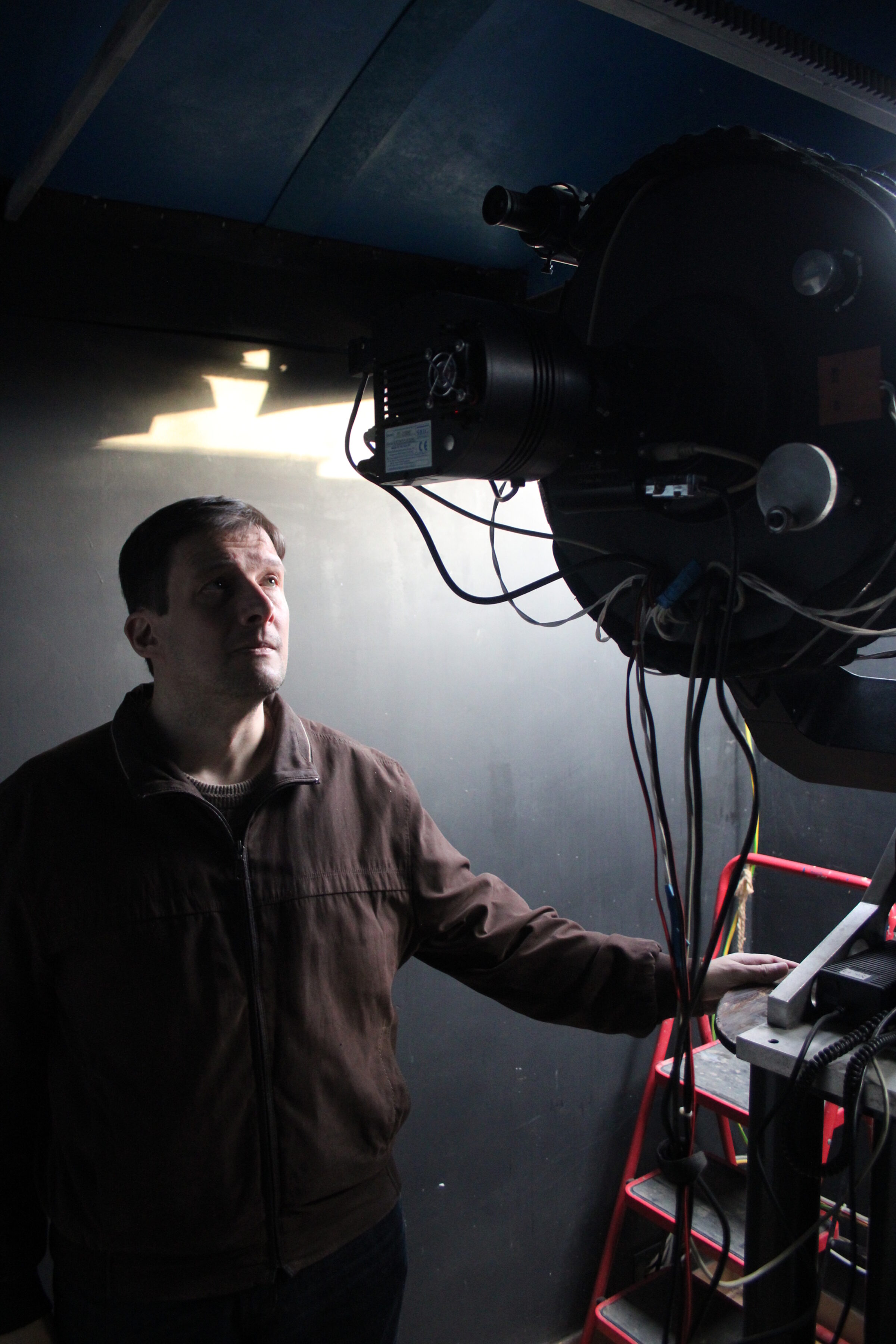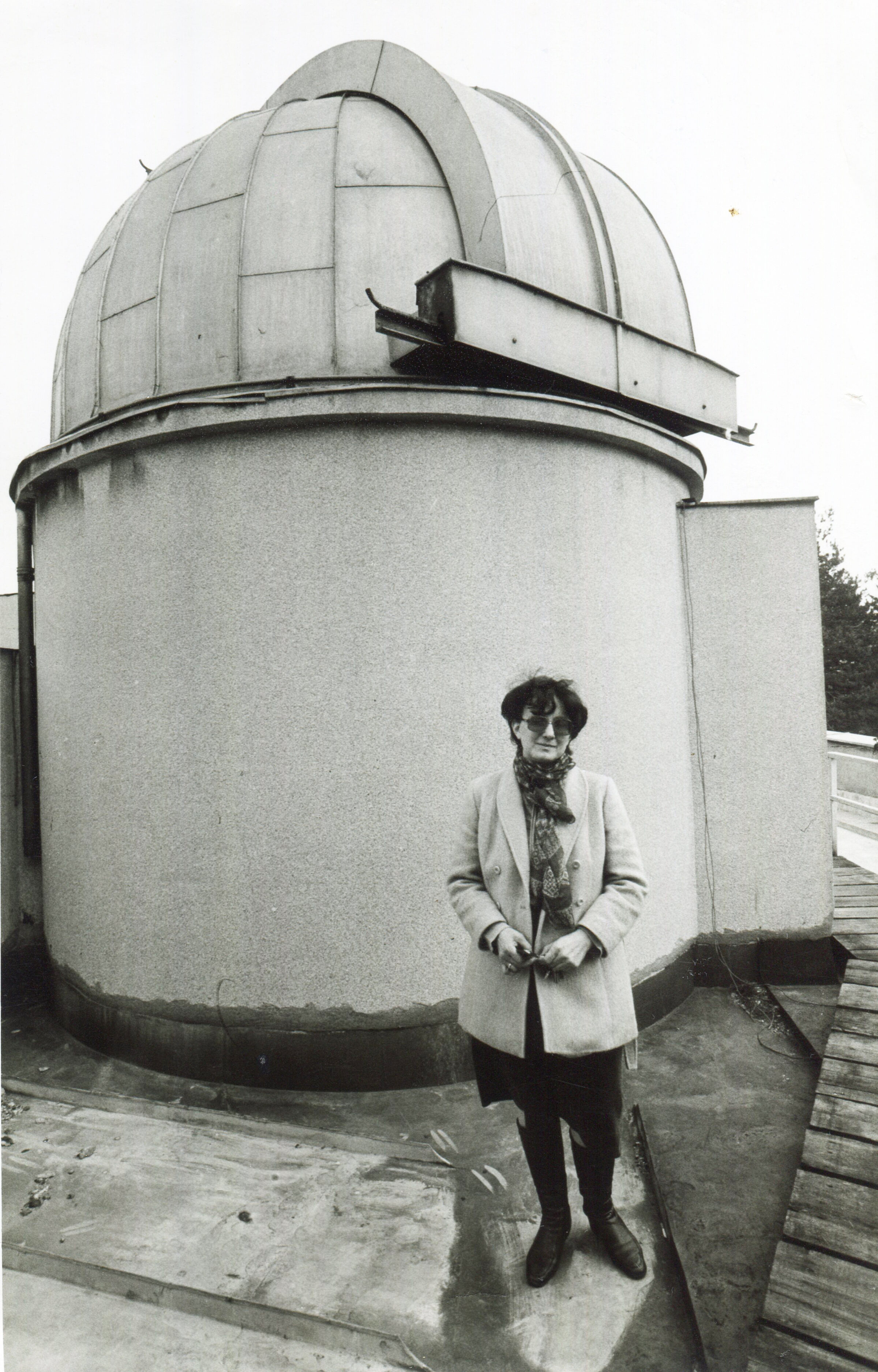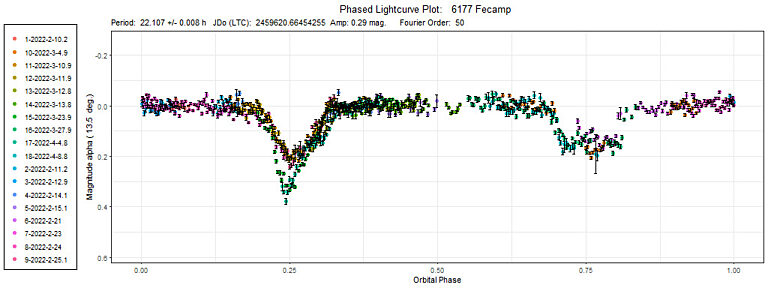Jason Davis • Jun 15, 2023
Vladimir Benishek and the mystique of asteroid research
How a planetary defender got started
Two-time Planetary Society Shoemaker NEO Grant winner Vladimir Benishek practically grew up at the Astronomical Observatory of Belgrade.
His grandfather, Milorad Protitch, began working there as an astronomer in 1932. Using a refracting telescope and photographic plates, Protitch discovered many main belt asteroids, including 2244 Tesla, named in honor of Serbian inventor Nikola Tesla.
Benishek’s mother, Vojislava Protitch-Benishek, also became an astronomer at the observatory. She tracked the position of asteroids and comets using photographic plates. Young Vladimir spent countless nights in the observatory with his mother, as she imaged famous Solar System objects like Halley’s comet.
Benishek remembers being captivated by what he called the “mystique” of the observing process: steering the telescope using brass-stamped coordinate scales, developing photographic plates in the dark room, and watching in awe as a picture of an asteroid or comet slowly revealed itself.
The mystique wasn’t limited to the observatory.
“As a child, I was spending countless moments in a home environment where there were continuous discussions about asteroids, comets, astronomy and related sciences in general,” he told The Planetary Society. “It ignited an insatiable desire to reveal the secrets hidden by celestial bodies.”
Benishek would follow in his grandfather and mother’s footsteps by working at the Astronomical Observatory of Belgrade. He also forged his own path by building an observatory that now makes significant contributions to the field of asteroid research.
He would eventually become a two-time awardee in The Planetary Society’s Shoemaker NEO Grant program, which funds efforts to find, track, and characterize near-Earth objects. Getting there would take Benishek through a few twists and turns.

From photographs to pixels
Starting in the early 1990s, Yugoslavia began to fracture into its original constituent countries. Upheaval, war, and atrocities gripped the region. In Belgrade, work at the observatory ground to a halt.
Benishek was in secondary school at the time. With the telescopes idle, he saw an opportunity to do some observing, putting the lessons he had learned from his mother and grandfather to work. He sporadically captured images of asteroids and comets on photographic plates, and even performed some position measurements.
In 2001, he began working at the observatory professionally, first as a technical associate and later as an expert associate. He also obtained a master’s degree in astronomy.
Benishek’s observatory duties have included a wide range of activities over the years: processing observing data, programming, digitizing an archive of 15,000 photographic plates, making daily solar observations, and performing tasks related to the history of astronomy.

In 1997, while he was still a student, Benishek took one of the observatory’s barely-used digital imagers — a Charge Coupled Device, or CCD — and mounted it on a telescope. He began measuring the positions of asteroids and comets and submitting the data to the International Astronomical Union’s Minor Planet Center, the global clearinghouse for the positions of Solar System objects.
Spurred by success from his early CCD work, Benishek began thinking bigger. The era of digital imaging was in full swing, and a new software package named MPO Canopus allowed users to capture both position data and lightcurve data, which can be used to help determine an asteroid’s shape, size, and spin rate.
“I became very interested in starting these types of observations, knowing that for a large number of asteroids rotation periods have not been determined as their most basic physical parameter,” he said.
To make an impact, Benishek needed better gear. He convinced the observatory to invest in a 0.41-meter (16-inch) telescope and a new CCD camera. Everything went online in 2004, and Benishek was soon collecting valuable asteroid data. At one point, he teamed up with other astronomers to observe a near-Earth asteroid while Arecibo Observatory in Puerto Rico simultaneously collected radar data.

Moving out of town
The Astronomical Observatory of Belgrade is located in the heart of a region that holds nearly 1.7 million people. Like other historical city observatories, it has over time become blanketed with light pollution, making scientific observing difficult.
Benishek had hoped to move the observatory’s new telescope and CCD camera out of the city, where it could continue its asteroid research under darker skies. Instead, his superiors began allocating the telescope to other projects, eventually canceling his work altogether in 2013.
Fortunately, Benishek had already made other plans. In 2009, using a large chunk of his own savings and a financial contribution from his mother, he purchased a secondhand 0.36-meter (14-inch) telescope and a CCD camera. The telescope sat dormant while he scraped together more funds to build a small observatory on a piece of land he owned near Sopot, a small town about 50 kilometers (31 miles) south of Belgrade. His newly christened Sopot Astronomical Observatory finally went online in 2013.
Sopot was designed for remote observing from the beginning, with a roll-off roof and automated telescope controls. Although Benishek’s telescope was slightly smaller than the one he had used in Belgrade, the difference in light pollution meant his Sopot telescope actually yielded better results.
Benishek joined a binary asteroid survey in 2014 that required very precise measurements. With guidance from the Czech astronomer Petr Pravec, he leveled up his observing skills and began making his own binary asteroid discoveries. Over the course of three years, he made the second-most binary asteroid discoveries in the world.
“There were literally dozens of such discoveries from Sopot Observatory over the years,” he said.
Soon, Benishek had more work on his hands than he could handle with a single telescope. He dipped into his personal savings again to purchase a second 14” telescope, which sat dormant, awaiting a CCD camera.
In 2018, he applied for funding to purchase a new CCD camera for the telescope through The Planetary Society’s Shoemaker NEO Grant program. His proposal was selected for a $5,060 grant, and soon Sopot Observatory was more productive than ever before.

Making an impact
As telescope technologies get better and the world’s professional sky surveys find more and more mid-size asteroids, the focus shifts to dimmer, harder-to-observe objects.
To stay productive, Benishek needed a bigger telescope. To avoid any production problems related to Serbia’s economic environment, he decided to build the telescope himself, with the exception of the mirrors.
“The optical elements of the telescope are its vital parts, so they absolutely had to be ordered from a manufacturer with a high reputation for producing high-quality astronomical optics,” he said.
Once again, The Planetary Society came through. In 2021, Benishek won a $9,500 Shoemaker NEO grant to order a 0.5-meter (20-inch) main mirror and a 0.1-meter (5-inch) secondary mirror from two U.S.-based optics companies. His new telescope is currently under construction.

In 2022, NASA’s DART spacecraft slammed into asteroid Dimorphos, successfully altering its orbit around asteroid Didymos and validating a technique that could be used to redirect an asteroid on course to hit Earth.
Before the impact, DART’s camera captured images of both asteroids, offering a rare up-close look at the mystique of a binary asteroid system. Benishek, who regularly observes binary asteroids, said it was fascinating to see their surface features from a spacecraft.
“It is even more exciting to change the properties of such a system by impacting one of its components,” he added.
He pointed out that an asteroid mission like DART relies on numerous ground-based observations before a spacecraft ever arrives at the launch pad. In the team sport of planetary defense, everyone makes an impact.

Support our core enterprises
Your support powers our mission to explore worlds, find life, and defend Earth. You make all the difference when you make a gift. Give today!
Donate

 Explore Worlds
Explore Worlds Find Life
Find Life Defend Earth
Defend Earth

